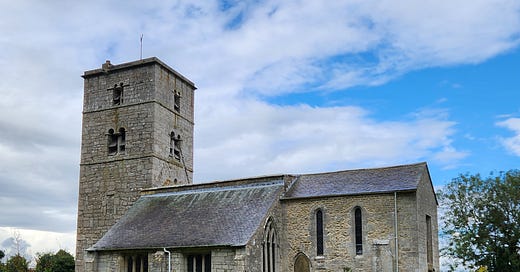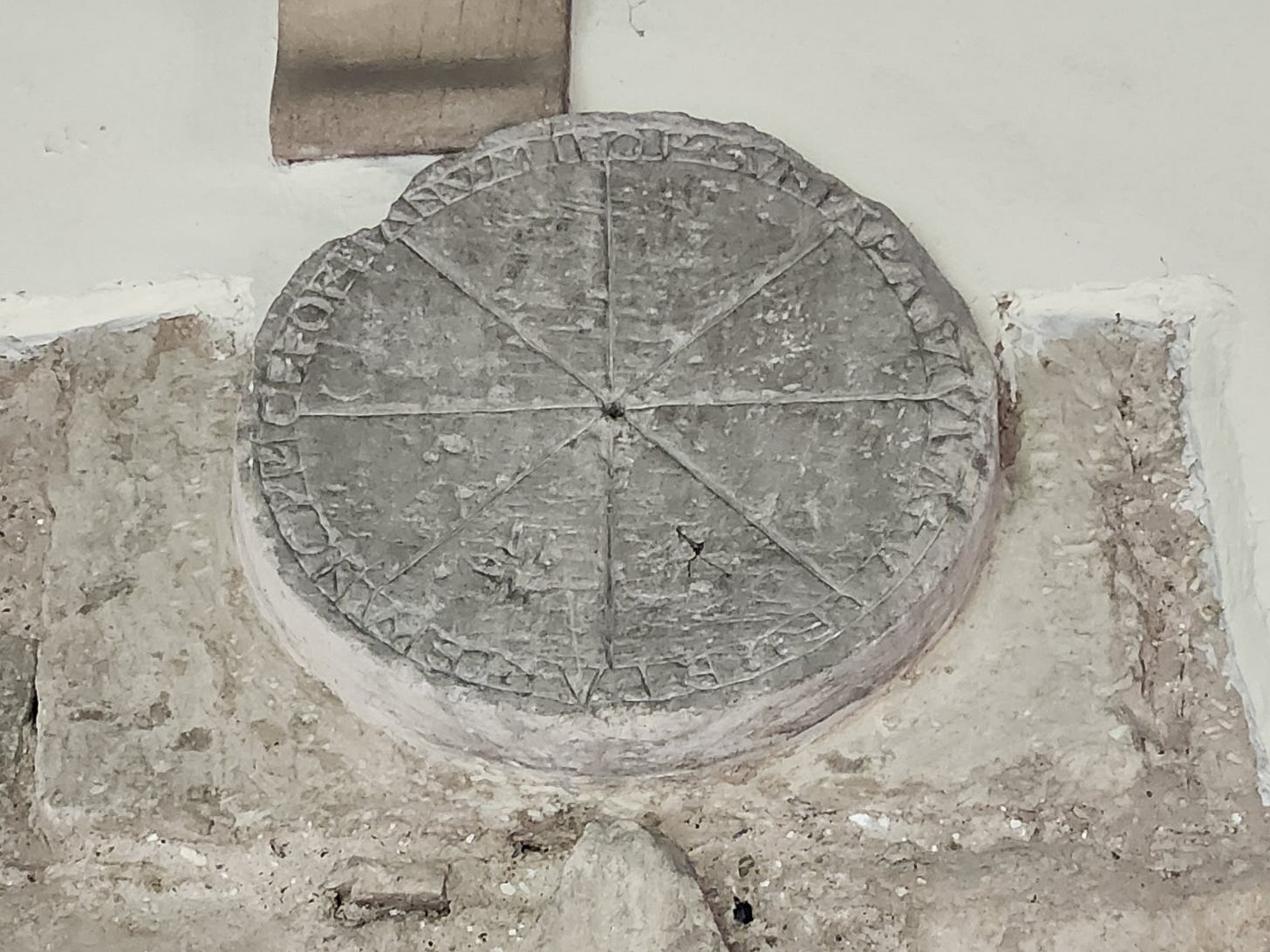The period from the end of the 10th century and up to 1066 saw the building or rebuilding of a number of churches. Unfortunately, the Norman mass rebuilding that took place as a political act after 1066 has erased most of these churches. What is left are traces preserved in the later buildings and, most epecially church towers.
The splendid 11th century tower at Appleton-le-Street, Yorkshire, with its unusual two-storey double openings
Only one church that I have visited has survived in a more intact form and, handily, the man who built it put his name on it and dated it – a very rare thing! It’s called St Gregory’s Minster:
The west end of Kirkdale is thoroughly Saxon, though the chancel on the right and the windows you see here are much later.
The reason we know when it was built is placed above the door (it may have been elsewhere originally):
Orm Gamal's son bought St. Gregory's Minster when it was all broken down and fallen and he let it be made anew from the ground to Christ and St. Gregory, in Edward's days, the king, and in Tosti's days, the Earl. This is day's Sun marker at every tide. And Haworth me wrought and Brand, priests.
The references in the text mean that at the latest, this church was built in 1065. The original church was destroyed during the Viking period but was an Irish missionary foundation some centuries earlier, and in fact the dedication to St Gregory demonstrates its ancient origins. St Gregory died in 604 so the foundation must have been made in the 7th century or later. Often you can deduce a lot from the name of the saint attached to the church; after the Norman takeover of England, the dedications changed to more fashionable Norman saints. So the site was bought by Orm Gamalson and he must have provided the funds to the priests Haworth and Brand to rebuild it.
Last week I showed you a couple of old crosses built into the walls of this church – here is a wider picture of this area. On the left you can see a much later extension but the original wall corner, with its Saxon long and short stones, is still there.
In addition to the inscription, there is also what is called a sundial in the middle. It did certainly indicate the passing of time, but more importantly it showed the time for mass and vespers. You can see little crosses on a couple of spokes of the dial, which would have had particular meaning. We’ll come back to this church later in this post.
St Gregory’s is in Yorkshire, along with another church I have visited which also had a sundial with engraving. This is at Aldbrough, on the east coast.
+Ulf had this church built for his own sake and for Gunnvor's soul
This is also pre-1066, by the way the sundial is made. It is believed to have been on another church and moved here due to the coastal erosion in the area.
Just like the crosses we saw in earlier posts, these inscriptions indicate that buildings or parts of them were effectively “sponsored” by parishioners, in the hope that they would gain a reward in due course. They gave money but also had a much stronger sense of their need for God’s mercy than we seem to have these days, with requests for prayers being a key part of their donation worked into the sculpture.
Keep reading with a 7-day free trial
Subscribe to Incola ego sum in terra to keep reading this post and get 7 days of free access to the full post archives.








